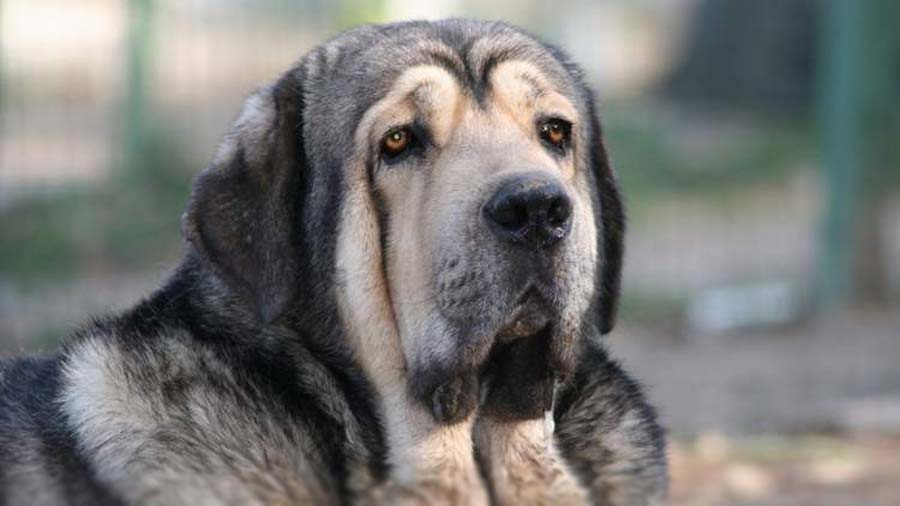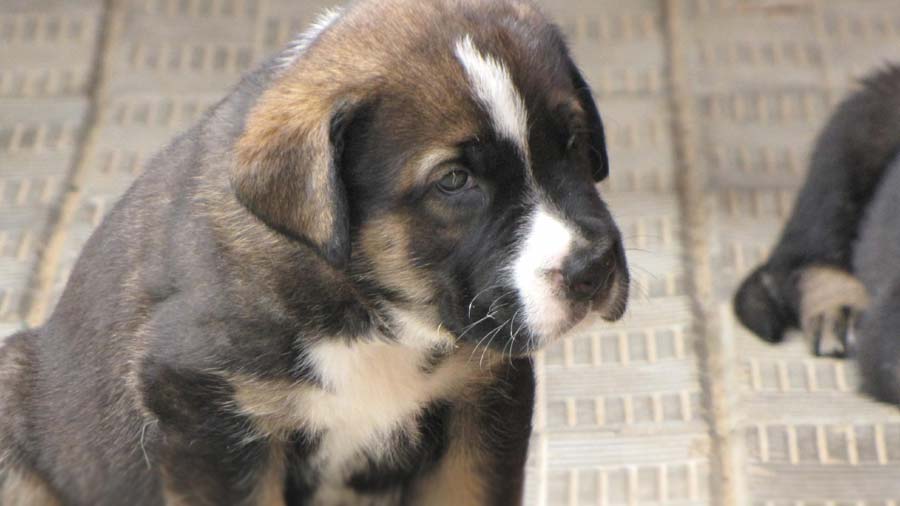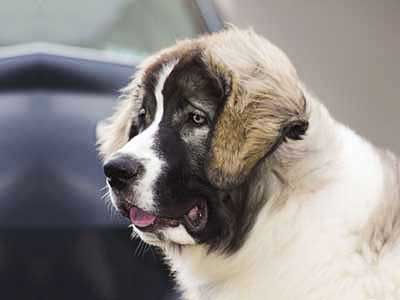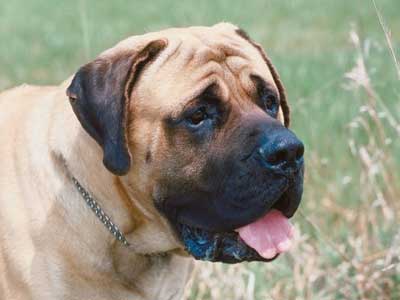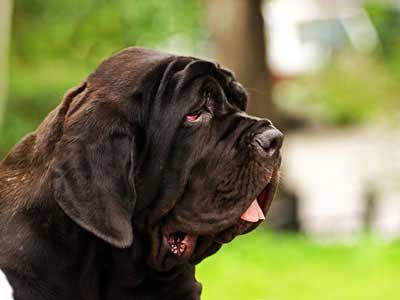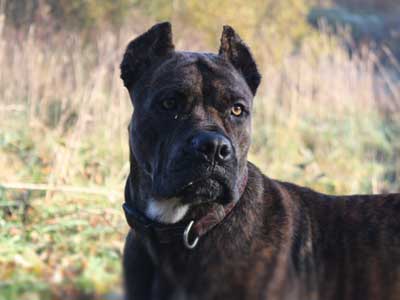Spanish Mastiff
Breed Information |
|
|---|---|
| Popularity |
2022: # 2021: # 2020: # 2019: # 2018: # 2017: # 2016: # 2015: # |
| Name | Spanish Mastiff |
| Other names | Mastín Español, Mastín de España, Mastin de la Mancha, Mastin de Extremadura, Mastin de Leon |
| Origin |  Spain Spain |
| Breed Group | Guardian Dog (UKC) |
| Size | Giant |
| Type | Purebred |
| Life span | 10-12 years |
| Temperament |
Affectionate Determined Intelligent Noble Self-assured |
| Height | 28-35 inches (72-88 cm) |
| Weight |
Male: 185-220 pounds (90-100 kg) Female: 145-170 pounds (52-77 kg) |
| Colors |
Black Brindle Fawn Sable Yellow |
| Litter Size | 3-6 puppies |
| Puppy Prices |
Average $1200 - $1800 USD
|
Breed Characteristics |
|
|---|---|
| Adaptability |
3 stars |
| Apartment Friendly |
1 stars Because of this dog’s sheer size, the Spanish Mastiff is not recommended for apartment life unless you plan to be very consistent with your pack walks, putting the dog in a rest mode for most of the day. These dogs are somewhat inactive indoors and should at least have a large yard. This dog's thick coat protects it from cold and wet so it can live outdoors. |
| Barking Tendencies |
2 stars Occassional |
| Cat Friendly |
3 stars |
| Child Friendly |
4 stars Good with Kids: This is a suitable breed for kids and is known to be playful, energetic, and affectionate around them. |
| Dog Friendly |
3 stars |
| Exercise Needs |
3 stars When fully mature, this breed has an average need for exercise. Like all giant dogs, this breed is very slow to mature, especially the males, which keep growing up until 2.5 to 4 years of age and are rather short-lived. They have a fairly low activity level and need only a moderate amount of exercise. Daily walks for about an hour twice a day is about all they need. They tend to be most active when they are young adults. This is not a breed for very active, sporty people who want a dog to jog, run alongside a bike, or play fetch or Frisbee with. |
| Grooming |
2 stars Brush the short, dense coat regularly, especially when the dog is shedding. Keep the ear passages clean. |
| Health Issues |
2 stars Hypoallergenic: Unknown |
| Intelligence |
3 stars Ranking: (N/A) Full Ranking List |
| Playfulness |
3 stars |
| Shedding Level |
3 stars Moderate Shedding: Routine brushing will help. Be prepared to vacuum often! |
| Stranger Friendly |
3 stars |
| Trainability |
3 stars |
| Watchdog Ability |
4 stars |
Spanish Mastiff Names |
||
|---|---|---|
| Rank | Boy Names | Girl Names |
| 01 | Buddy | Molly |
| 02 | Max | Bella |
| 03 | Cody | Chloe |
| 04 | Jack | Luna |
| 05 | Rocky | Nala |
| 06 | Jax | Ellie |
| 07 | Oliver | Zoey |
| 08 | Sam | Annie |
| 09 | Teddy | Lexi |
| 10 | Gizmo | Penny |
| 100 Cute Puppy Names › | ||
Overview |
|---|
|
The Spanish Mastiff is a very large and powerful dog, similar in appearance to the other Mastiff breeds. They have a large powerful head and serious and vigilant expression. It has small eyes and drop ears resembling triangles. This dog's coat is most often fawn-colored, but can also be brindle, black or 'wolf' colored. Reddish tones indicate miscegenation. This noble giant is aloof, dignified, calm and intelligent. It is devoted to its family and may politely accept strangers if it has been socialized properly, although it will be wary of them. It can be aggressive toward other dogs. The Spanish Mastiff may be a less-than-ideal pet in urban situations, where its booming voice and massive size could be problematic. It is a wonderful protector of its home and family. And an ideal protector of herds and flocks from wolf predation. Socialization and training should begin early to ensure this dog a stable and reliable pet. Supervised exposure in puppy-hood to a variety of unfamiliar but non-threatening dogs will help dampen a tendency to aggression toward other dogs. The breed is quite alert and food motivated but can bore easily; training must be consistent and firm but gentle. Once the trainer has established the dog's respect as leader, the Spanish Mastiff will be an extremely loyal pet. |
History |
|
The Spanish Mastiff has long been used to guard the Merino livestock as they are moved from one pasture to another. In ancient times he often accompanied them on his own, without guidance from a shepherd. Today, the breed is also useful as a protector of farm and family. The Spanish Mastiff was recognized by the United Kennel Club July 1, 2006. |
